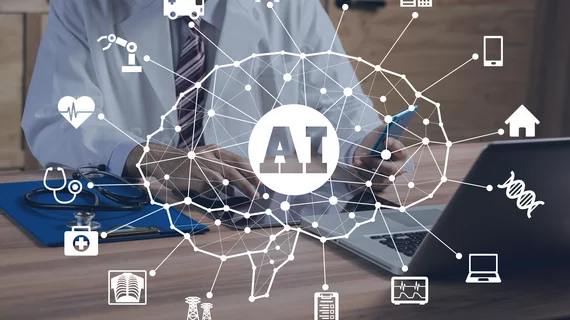Artificial intelligence adoption appears to be lagging in radiology and the rest of healthcare, and experts with the influential Brookings Institution have a few theories why.
The Washington-based research outfit pointed to U.S. job advertisements as potential proof of this slow rate of uptake. Typically, as technology evolves, labor demand adjusts to include the skills required to implement such innovations, Brookings experts wrote March 9.
However, healthcare lands near the bottom of the list, according to 2015-2018 data collected by Burning Glass Technologies. Just 1 in 1,850 healthcare job postings during that timeframe required AI-related skills, ahead of the construction industry’s 0.04% clip.
“While we expect these numbers to rise over time—both in and out of healthcare—healthcare appears to lag,” Avi Goldfarb, PhD, the Rotman Chair in Artificial Intelligence and Healthcare at the University of Toronto, and Florenta Teodoridis, PhD, MBA, an assistant professor of management and organization at the USC Marshall School of Business, noted. “This suggests a puzzle. How can we reconcile the hype around AI in healthcare with the relatively low rate of adoption?”
The authors also pointed to a 2016 prophecy from Geoff Hinton, who won computer science’s highest honor, the Turing Award. At the time, he proclaimed: “We should stop training radiologists now; it is just completely obvious deep learning is going to do better than radiologists.”
“This prediction was informed by the very promising advances of AI in image-based diagnosis. Yet there are still plenty of radiologists,” Goldfarb and Teodoridis wrote.
Reasons this prediction never came to pass include lack of trust in AI algorithms, challenges in data collection, and various regulatory barriers. They also pointed to a “misalignment of incentives” in healthcare. Based on their job posting analysis, AI adoption varies by hospital management structure. AI skills were less likely to be listed for clinical roles when compared to those in administration or research. Meanwhile, institutions with an integrated salary model had a higher rate of AI adoption among clinical roles compared to hospitals managed by doctors.
The authors cautioned, however, that this phenomenon is likely more complicated than it appears on the surface.
“Even if professional managers are more likely to adopt AI, they are not necessarily right to engage in adoption at this stage,” they wrote. “For example, while it may be that doctor-led hospitals have not adopted AI because they view it as a threat to their jobs, it may also be that doctor-led hospitals have leaders who have a better grasp of the other adoption challenges—algorithmic limitations, data access limitations, and regulatory barriers.”
You can read more of the Brookings analysis, including potential policy implications, for free here.

